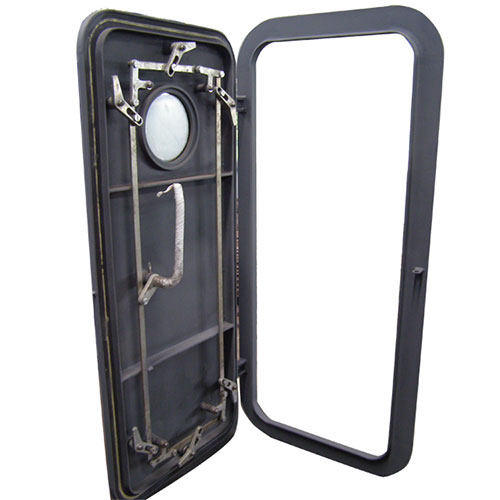How to Customize Marine Doors for Specific Vessels
Marine doors are essential in ensuring security, safety and ease of use for vessels operating in a variety of marine environments. Be it for offshore platforms, ships platforms or leisure yachts the ability to customize marine doors to match specific vessel types improves the efficiency of operations and ensures safety while complying with the industry’s regulations.
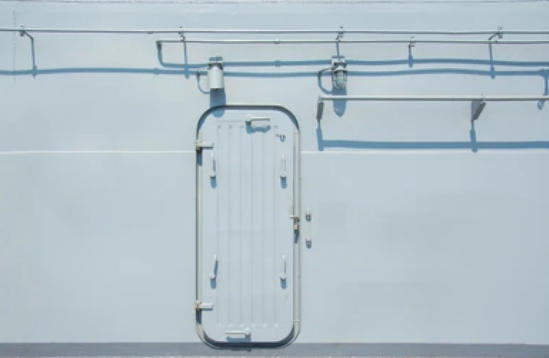
Table of Contents
Why Need Customizing Marine Doors for Specific Vessels
Since each vessel is in a different environment and performs different requirements, a single-size-fits all approach is not effective. Customizing marine doors for specific vessels is necessary to meet the rigorous requirements of marine operations, while ensuring compliance with industry standards and providing long-term stability.
1. Meeting Safety and Regulatory Requirements
The safety aspect is the primary reason to customize marine doors. Ships must conform to the international standards for maritime security, such like SOLAS as well as IMO regulations. These standards specify the requirements for watertightness, the resistance to fire, and pressure tolerances depending on the vessel’s operating space and kind. Doors designed for a passenger vessel will not meet the same standards that one would find on an offshore drilling vessel, or the vessel of a naval vessel. With the help of customization marine doors can be constructed with the right fire rating as well as sealing integrity and pressure resistance, to ensure the safety of all situations.
2. Adapting to Environmental Conditions
The marine environment is diverse in all kinds of conditions, from calm waters and extreme conditions offshore. A customizing marine door enables it to endure the unique environmental stress the vessel is likely to encounter. For offshore platforms, doors must be constructed that be resistant to saltwater corrosion, powerful winds and high pressure while fishing vessels require light doors that are resistant to corrosion, that are suitable for prolonged exposure to saltwater. Through the tinkering of materials as well as coatings and seal design, doors made to order ensure their performance and avoid excessive wear within their operating environment.
3. Enhancing Structural Compatibility
Every vessel is unique in its layout, structure and function. Doors made by standard often do not meet these requirements that can result in inadequate fitting or inefficiencies. The custom marine door is made to be precisely aligned with the dimensions of the vessel and its specifications for installation. This allows for a seamless installation, improved sealing and a simple operation. If the vessel requires sliding or hinged doors, or double leaf doors, customization will ensure that the doors are compatible without sacrificing access or space.
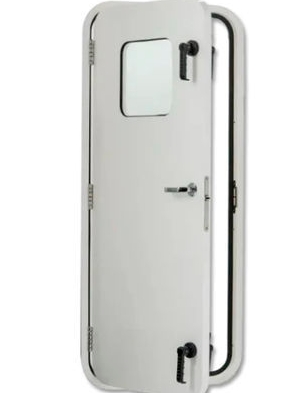
4. Improving Functionality and Efficiency
Customized marine doors help to ensure more efficient operations and a greater level of comfort aboard. For instance automatic sliding doors can be added to passenger vessels to make it easier to access as well as manually operated watertight doors are better suited to cargo boats. The possibility of customizing how the door opens, its handle style and locking mechanism helps users ensure safety, efficiency and convenience depending on the mission of the vessel.
5. Increasing Durability and Reducing Maintenance
Durability is yet another reason for why customizing is important. Marine doors are subject to continuous exposure to salt, water and pressure fluctuations. Customized designs allow the manufacturer to choose materials like aluminum or stainless steel or aluminum, apply corrosion-resistant coatings and then incorporate seals with high-performance that prolong the life of the door. Customization that is done correctly reduces maintenance requirements minimizes downtime and reduces operating costs over time.
6. Supporting Aesthetic and Comfort Needs
Alongside security and function, customizing is also a way to meet demands for aesthetics and comfort Particularly on passenger ships as well as luxury vessels. These types of vessels usually focus on aesthetic appeal as well as quiet operation along with thermal insulation. The doors that are custom-designed for marine use can have decorative finishes, noise-reducing components and soft-closing mechanisms that provide a comfortable and visually appealing onboard experience while ensuring safety performance.
7. Ensuring Optimal Performance for Specialized Vessels
Different vessels carry out different duties such as carrying passengers and cargo to carrying out military operations and offshore drilling. Each needs doors that have distinct features. Naval vessels may require blast-resistant doors and research vessels could prefer soundproof and watertight designs. Customizing marine doors allows this kind of specialization, making sure that the doors do not just safeguard, but also serve the purpose of the vessel.
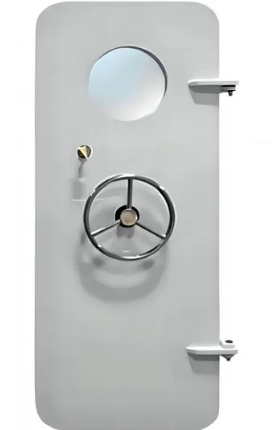
Types of Marine Doors for Customization
| Type of Marine Door | Key Features | Typical Applications | Customization Focus |
| Watertight Door | This prevents water from entering below the waterline, and ensures the integrity of the hull | Engine rooms, bulkheads, lower decks | Gasket material, resistance to pressure the locking mechanism |
| Weathertight Door | Guards against extreme weather conditions | Superstructure, main decks | Seal design, corrosion protection, material coating |
| Fire-proof Door | Refrains spread of flame and heat to ensure that it meets SOLAS/IMO standards. | Control rooms, areas for accommodation | Classification of fire rating the insulation material door thickness |
| Blast-proof Door | It is designed to withstand explosives or forces of high-impact | Naval vessels, Offshore platforms | Structural reinforcement Lock type and shock resistance |
| Soundproof Door | Reduces the transmission of noise between different compartments | Engine control rooms, cabins Luxury vessels, engine control rooms | Acoustic insulation, door core design, seal type |
| Sliding Door | Space-saving and simple to use with manual or auto choices | Access to bridges, passenger areas | Track system, automated type with smooth operation mechanism |
| Hinged Door | Traditional design that provides solid sealing and durability | Watertight compartments, corridors | Hinge type, opening direction, handle configuration |
| Lightweight Door | Combines strength and weight to create performance vessels that are light in weight. | Yachts, patrol boats, high-speed crafts | Design thickness, material selection Finish quality |
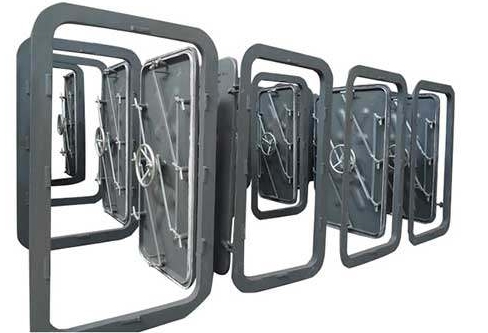
Key Parameters of Customizing Marine Door for Specific Vessels
The following parameters outline how marine doors are customized for specific vessels in order to ensure the high performance, safety and dependability.
1. Material Selection
The choice of material is among the most crucial factors when it comes to customizing the marine door. It affects the door’s longevity and its resistance to corrosion and the weight. Doors made of steel are commonly employed on industrial and commercial ships due to their durability and resistance to fire. Aluminum marine doors, as they are less heavy and more resistant to corrosion, make the perfect choice for speedy craft or passenger boats. Steel stainless, though more costly, offers greater resistance to saltwater as well as chemical exposure, which makes it ideal for marine and offshore use. The best choice of material ensures the door will perform reliably for its lifespan and reduces the need for maintenance.
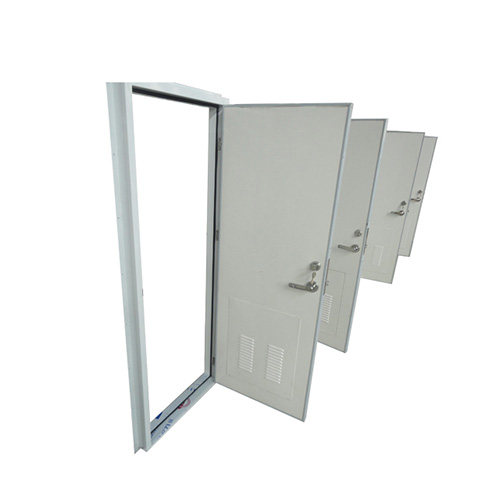
2. Size and Dimensional Accuracy
Marine doors should fit within the vessel’s design to ensure weathertight and watertight strength. The customization process ensures that the size matches the layout of the vessel and space. The dimensions will also be determined by the purpose of the door–larger doors could be needed for cargo handling or access to equipment, whereas smaller ones are suitable to be used for passageways for crew. The precise measurements made during customization can stop water or air leakage as well as decrease wear on hinges and seals, and increase the efficiency of operations.
3. Pressure Rating and Sealing System
Different vessels operate at different pressures and exposure conditions. Doors under the waterline for instance in bulkheads, engine rooms or bulkheads need watertight seals that are high-pressure for doors on decks, whereas those in engine rooms have to resist the effects of the elements of weather and sea spray. The gasket material and sealing mechanisms are modified to meet the requirements of specific pressure ratings and environmental requirements. This feature ensures the door’s efficiency in preventing flooding as well as maintaining the integrity of the compartment in adverse weather conditions.
4. Fire and Thermal Resistance
Fire safety is an essential element of the design of marine doors particularly for controls rooms and engine areas. According to the type of vessel and class doors that are fire-rated must be in compliance in accordance with SOLAS as well as IMO standards. Customization allows shipbuilders to select appropriate insulation materials, door thickness, and fireproof coatings that meet the required duration of fire resistance, typically A, B, or C class ratings. For vessels operating in harsh temperatures, thermal insulation may be added to help control the temperature inside.
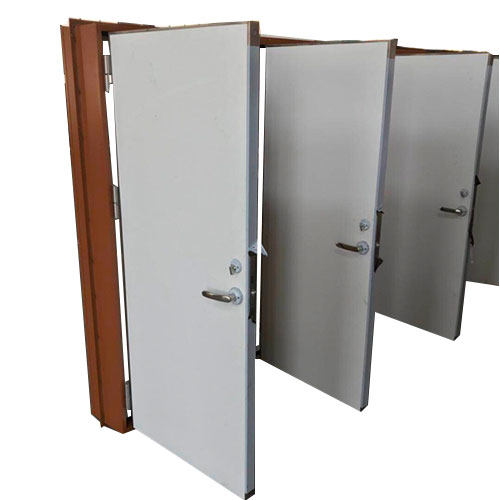
5. Surface Finish and Coating
The finishing of a door for marine use is not only about style, but is vital for protection against corrosion and durability. The ability to customize the finish allows for a variety of coatings like the epoxy coating or anodizing, according to the exposure of the vessel. Chemical vessels and offshore vessels, for instance could require anti-corrosive coatings to resist splashes of chemical and saltwater. Cruise ships and passenger vessels however are likely to have a preference for aesthetics and finishes that match the design of the vessel.
6. Operating Mechanism and Hardware
The marine doors use can either be operated manually either hydraulically or electrically controlled depending on their purpose and the frequency of their usage. Customization involves choosing the best operational mechanism and locking method and handle layout to guarantee ease of use and safety. Large-duty vessels might require stronger locks and hinges to ensure waterproof integrity, while high-end vessels could incorporate automatic sliding systems to provide convenience and class. Hardware materials like brass or stainless steel are typically chosen due to their toughness and corrosion resistance.
7. Weight and Structural Balance
The weight of a vessel plays an important role in vessel performance, particularly when it comes to smaller craft or those with high speeds. The ability to customize marine doors lets designers to equilibrium between weight and strength. Using lighter materials and a streamlined design, the structure reduces overall burden of the boat, increasing the efficiency of fuel and stability. However the door has to remain sturdy enough to stand up to the forces of nature and the sea.
8. Acoustic and Vibration Control
For certain types of vessels, like research vessels or passenger ships, controlling noise and vibration is a crucial consideration for marine doors. It is possible to customize the installation or acoustic insulation layer, or vibration-damping materials in your door’s construction. These improvements can create a more quiet and more comfortable environment on board and shield the equipment from damage caused by vibration.
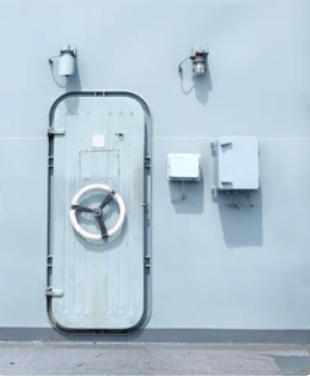
Applications across Different Vessel Types of Customized Marine Doors
| Vessel Type | Typical Marine Door Requirements | Customized Features | Purpose of Customization |
| Cargo Ships | Doors that are fire-proof and watertight | Steel frame construction, reinforced frames, secure locking systems | In order to ensure that the compartment is secure as well as fire safety and durability during the rigors of operation |
| Fishing Vessels | Doors that resist corrosion and are lightweight | Materials made of stainless steel and aluminum Simple manual operation | To protect against saltwater exposure, and facilitate frequent use in moist conditions |
| Passenger Ships and Ferries | Fire-rated, aesthetic, and doors that are noise-reducing. | Sound insulation, decorative finishes and automatic sliding systems | In order to improve passenger comfort security, accessibility, and comfort |
| Offshore Platforms | Weatherproof, high-pressure and blast-resistant doors | Steel of heavy gauge Multi-point locking, anti-corrosive coatings | For enduring extreme offshore conditions and to ensure safety in high pressure |
| Naval and Patrol Vessels | Soundproof, blastproof and watertight doorways | Panels reinforced with reinforcement with vibration damping, stealth coatings | To ensure safety and security, protection from noise and vibration for military missions |
| Yachts and Luxury Vessels | The doors are light and elegant. They’re also resistant to corrosion. | Materials such as aluminum or composites and polished finishes, as well as soft-closing characteristics | To strike a balance between aesthetics, ease of use and long-term resistance to corrosion |
| Research Vessels | Door that is soundproof and watertight | Acoustic insulation, gaskets with a pressure rating Precision fit | For the protection of sensitive equipment and ensure a peaceful operations on board |
| Tankers | Doors that are watertight and fireproof for use in hazardous conditions | A high fire-rated structure, with anti-explosion properties chemically resistant coating | To increase the safety of your family against the risk of explosions, fires and exposure to chemicals |
| High-speed Crafts | Doors that are lightweight and aerodynamic | Aluminium construction with flush mounted design locks that are quick-access | To decrease the weight of vessels increase performance, reduce weight, and provide quick, safe access |
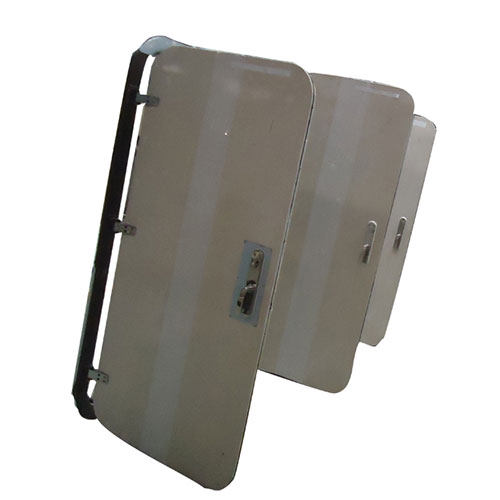
The Customization Process of Marine Doors for Specific Vessels
| Stage | Description | Key Activities |
| 1. Requirement Analysis | Understanding the vessel’s purpose of operation and the environmental conditions | Find out information about the type of vessel the location of installation, safety class, and other regulatory regulations |
| 2. Design Planning | The design of a marine door concept that is custom to the specifications of the vessel | Design models in 2D/3D and determine the dimensions, material choice, and seal type |
| 3. Material Selection | Selecting the right substances for their strength, durability, and resistance to corrosion and the balance of weight | Examine aluminum, steel or stainless steel alternatives; choose hinges, gaskets, and coatings |
| 4. Structural Engineering | Insuring watertightness and mechanical integrity | Perform a strength analyses, tests of pressure and fire-resistance simulations |
| 5. Prototype Fabrication | Making a model door to test and validate | Make a prototype of the product using the specific materials and parts |
| 6. Testing and Certification | conducting functional pressure and safety tests in accordance with the marine standards | Conduct fire, watertight and endurance tests Get approval for classification (e.g., SOLAS, IMO) |
| 7. Final Production | Custom-designed marine doors are manufactured in full-scale | Make use of precise fabrication coating applications, quality control inspections |
| 8. Installation and Integration | Doors to be fitted inside the vessel structure | Work with shipbuilders to ensure smooth installation, alignment and integration |
| 9. After-sale Support | Assisting with maintenance, as well as technical assistance | We offer replacement parts and service guides and technical assistance |
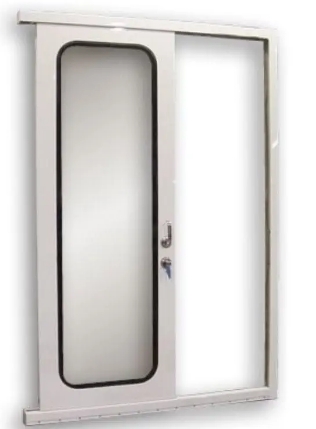
Summary
Customizing marine doors for specific vessels requires the engineering of safety, reliability and performance in every component. When considering the vessel’s operating conditions, its material requirements and safety requirements, shipbuilders and operators can assure long-lasting, effective and regulatory-compliant door systems that improve safety and user experience on the water.


